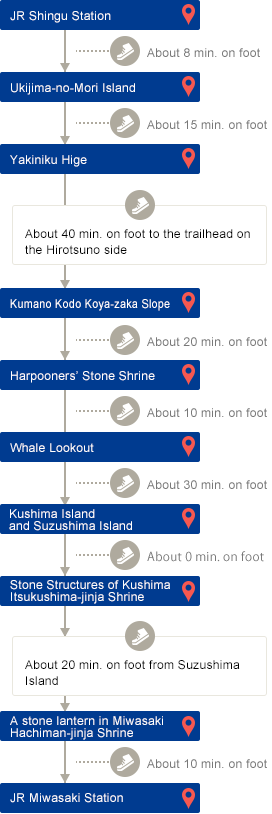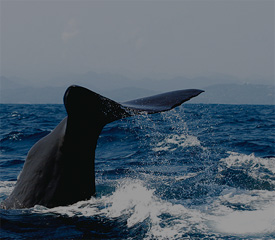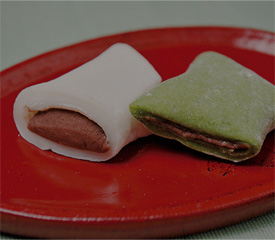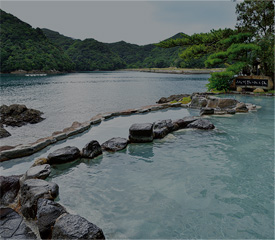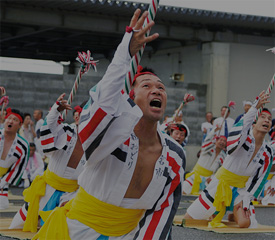There are a variety of places worth visiting in Shingu in the heart of the Kumano region, and they’re all within walking distance. You’ll head over scenic Kumano KodoKoya-zaka Slope, which is a registered Japan Heritage site, on the way to Miwasaki, once a flourishing whaling base.
You’ll head from downtown Shingu over Kumano KodoKoya-zaka Slope along the shore to Miwasaki, which used to be a whaling base. There’s plenty to see on this route, including Japan Heritage and World Heritage sites and a geopark.
Your first destination will be Ukijima-no-Mori Island, a mysterious forest of about 5,000 square meters that seems in its entirety to be floating in a bog. The rare colony of plants that can be seen in the area, which have adapted to both hot and cold weather, has been designated as a Natural Monument by the Japanese government.
Next, you’ll feast on a lunch of Kumano beef at Yakiniku Hige.
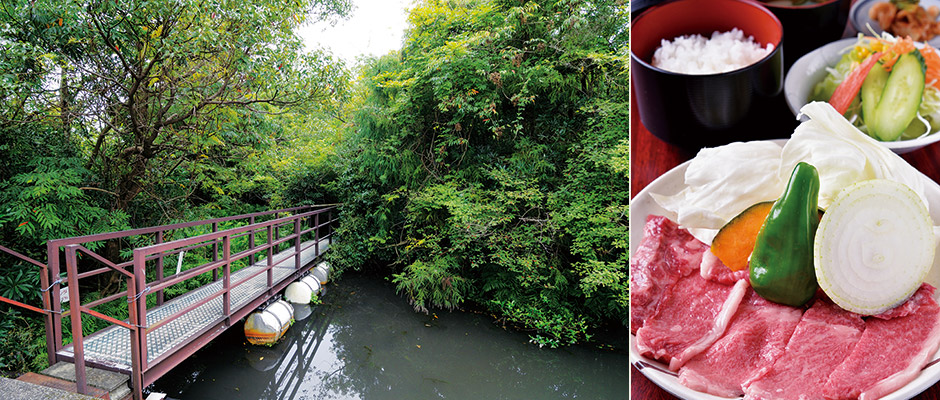
Ukijima-no-Mori Island (left photo)
Yakiniku Hige (right photo)
In the afternoon, you’ll head over Kumano Kodo Koya-zaka Slope, a registered World Heritage site, on your way to Miwasaki, which long ago was a base of whaling. The route from Yakiniku Hige to the Koya-zaka Slope trailhead (on the Hirotsuno side) can be a little difficult to follow, so you may want to take a taxi for that.

Kumano Kodo Koya-zaka Slope
It’s a great idea to take a stroll along the Ojigahama Coast before setting out for the Koya-zaka Slope. From the trailhead, you can walk underneath the Kisei Main Line bridge, which parallels the road, to gain access to the beach*.
*The area underneath the bridge is prone to flood after heavy rain, making Ojigahama Coast inaccessible.
Koya-zaka Slope is a road that was used by pilgrims traveling from Shingu toward Mt. Nachi. The area comprises a registered World Heritage site whose old-fashioned ambience remains well preserved. If you proceed uphill toward Hirotsuno, there’s a viewing area from which you can see the Ojigahama Coast. If you proceed a little further down the cobblestone road while enjoying the spectacular scenery, you’ll find two Japan Heritage sites: the Harpooners’ Stone Shrine and the Whale Lookout.
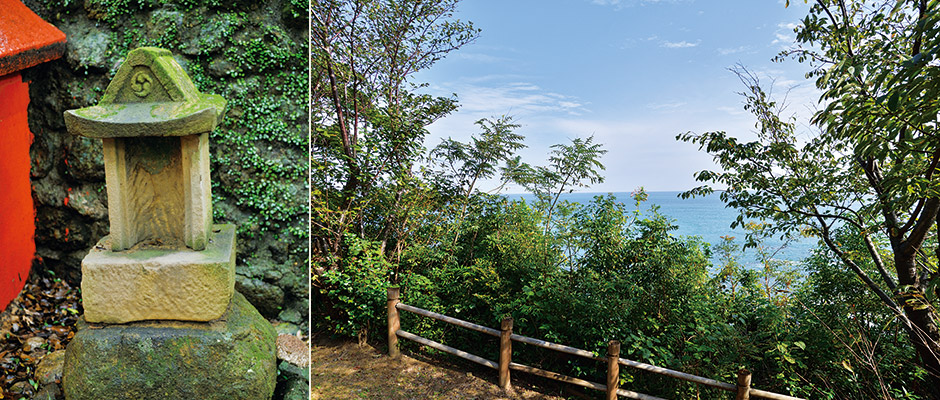
Harpooners’ Stone Shrine (left photo)
Whale Lookout (right photo)
Next, you’ll descend the hill and proceed along the coast until you reach Miwasaki Fishing Port. Kushima Island and Suzushima Island, which are part of a geopark, both lie beyond the port, and both can be reached by walking along the embankment. On Suzushima Island, check out intricate topography that was formed by natural forces acting on the land. On Kushima Island, you can find Buddhist statues and stone lanterns offered by the whaling superintendents of Miwasaki and Taiji, and the area has been registered as a Japan Heritage site: Stone Structures of Kushima Itsukushima-jinja Shrine.
You can find about 120 plant species on Kushima Island, including crinum, which produces white flowers during the summer, and around 60 species on Suzushima Island. The colony of warm-weather plants has been designated a Natural Monument by the City of Shingu.
You’ll leave the rich, natural beauty of these two small islands and head toward your last destination, Miwasaki Hachiman-jinja Shrine. On the grounds of the shrine you’ll see a stone lantern offered by a whaling superintendent named Taiji Yoichi, communicating the beliefs of the time to the present day. The shrine holds an annual festival featuring the Miwasaki Whale Dance. After filling your mind with thoughts of the bravery demanded by traditional whaling, you’ll head back from Miwasaki Station.
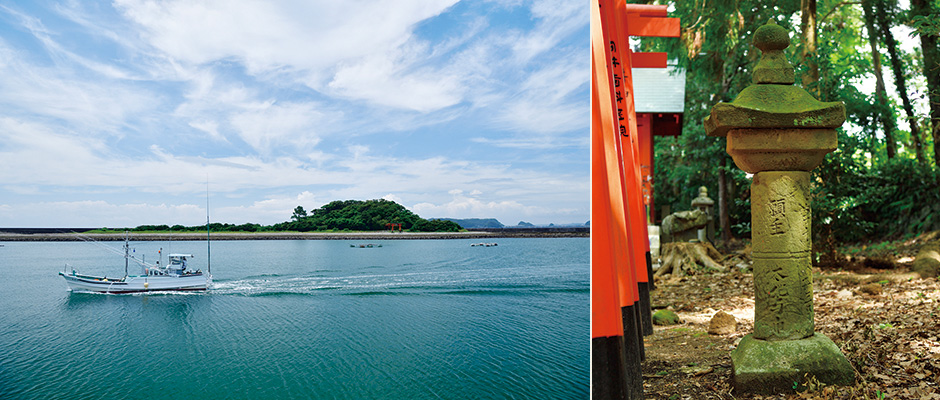
Kushima Island and Suzushima Island (left photo)
Miwasaki Hachiman-jinja Shrine (right photo)
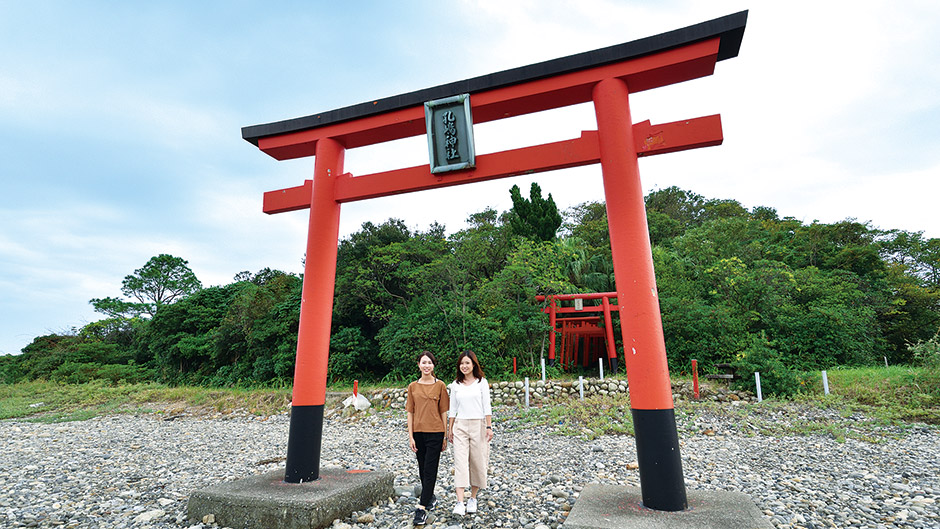
Kushima Island and Suzushima Island






